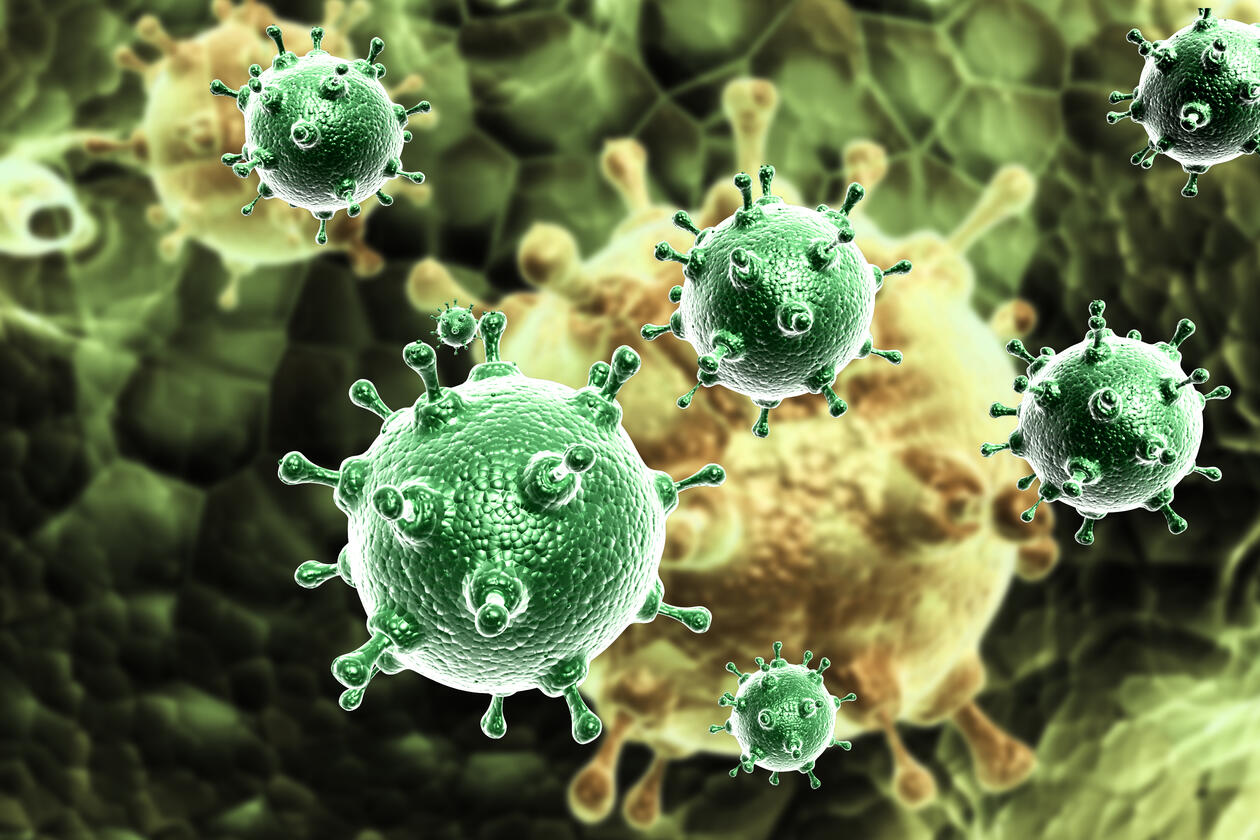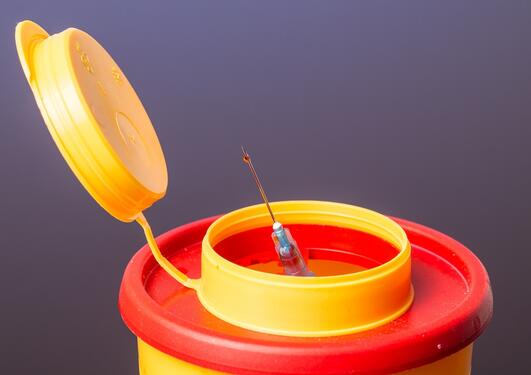Risk assessment of biological factors and genetically modified microorganisms
The employer shall assess whether there may be a risk of the employee being exposed to biological factors.
Main content
If the activity may entail a risk to the employee's health or safety, the exposure shall be mapped and consideration shall be given to how the exposure takes place. Both infection risk and other health hazards shall be assessed. On this basis, the wmployer shall risk assess the circumstances.
Risk of transmission
The risk of transmission is related to the degree of contact with blood or other bodily fluids. There is no risk of transmission in case of contact with blood on undamaged skin. Stab wounds are considered the most common form of transmission.
Assessment of source of infection, risk of infection and treatment
When exposure to blood, bodily fluids and other biological factors, preventive treatment should be considered when:
- The source of infection is the carrier of a human pathogenic organism against which the injured person has not been vaccinated
- The source of infection is Lentivirale /Retroviral vectors (viruses) in connection with GMM work
- The source of infection is laboratory animals
- The risk assessment implies high risk
- The source of infection is unknown
In case of contact with bodily fluids
For transmission in the event of stab wounds to contaminated needle, the risk of
- Hepatitis B 10 - 30%,
- Hepatitis C 3-5%
- HIV about 0.3%. In the Nordic countries, hiv transmission has never been detected in the event of stab wounds.
In Norway, the incidence of Hepatitis B and C is highest among injecting drug users. The incidence of HIV positive is highest among people from Africa and Southeast Asia. There has been an increase in infection among homosexuals in recent years, while for injecting addicts there is little nysmitte. The chance that a patient is infected with Hepatitis B, C or HIV will therefore be low if he/she does not belong to one of these risk groups.
When working with human pathogenic bacteria and viruses
Transmission by stings and cut injuries by direct exposure of bacteria and viruses is considered high.
Risk of exposure depends on the type of pathogen, and this must be evaluated for each type.
When working with cell lines
The greatest danger of exposure when working with cell lines is the occurrence of disease-causing agents. Commercially available cell lines have been tested for a range of potential disease-causing viruses and bacteria. Cell lines infected with agents that can induce moderate diseases are marked with a higher risk level (BSL 2). Cell line providers recommend that all cell lines, although marked as BSL 1, be treated as potential carriers of infection at BSL 2 levels, since they cannot test for all types of viruses and bacteria.
The closer the genetic similarity the cell line has with man, the higher the risk of transmission. This is due to the kinship of the host and the human immunological response factors. Human cell lines therefore involve the greatest risk. Other factors that also come into play and that need to be considered are the concentration of cells and the number of cell lines to which one has been exposed.
The risk of transmission of cells developed from human or other animal species is considered minimal.
When working with laboratory animals (mice and rats)
Infectious baits can be transmitted by damage to the skin, via the respiratory tract with the help of aerosols that can occur by, for example, cleaning cages or the animals' own activity. Infection can also be transmitted by operations and dissections.
Possible exposure hazards:
- Development of allergy to the laboratory animals
- Zoonoses (infectious diseases that can lie latent in the animal. Some of these can be very dangerous for humans)
- Injection of agents that should have been injected into the laboratory animal, such as cancer cells, cytostatics, other forms of treatment)
Risk assessment of own work
The operations must be risk assessed.
Various risk assessment forms
Here is a link to the form for risk assessment of biological factors.
Here is a link to the form for risk assessment of genetically modified organisms.
For HSE risk assessment of the local working environment: here is a link to various templates that can be used.
Everyone should have the necessary knowledge about the different biological factors they come into contact with through their work.
It is recommended to have an overall overview with information about cell lines and microorganisms used in the laboratory.
Chemical inventory
For hazardous biological material, information sheets must be prepared containing information about the name, supplier, health-damaging properties, risk of infection, etc.m.
The University of Bergen has prepared a reporting form that can be used. You can also use the chemical inventory, link on the HSE-gateway.
Committee on Biosecurity
A biosecurity committee has been established. The committee shall be an advisory body at UiB in connection with the use of biological risk factors and genetically modified organisms. The committee shall advise entities in connection with approvals and applications, ensure that regulations are always updated and assist in the event of questions concerning risk assessment.
Inquiries to the committee can be made via the self-service portal UiBHjelp.
Working alone
Work on the potential risk of serious infection should be avoided outside normal working hours.
If this is nevertheless required, the employee must have discussed this with their immediate manager. Together, they need to find a solution that works, such as:
- Time determined
- A colleague is nearby
- Mobile or other form of notification must be available
- Manager is notified when the work is done
See also: Working alone in hazardous working environment

